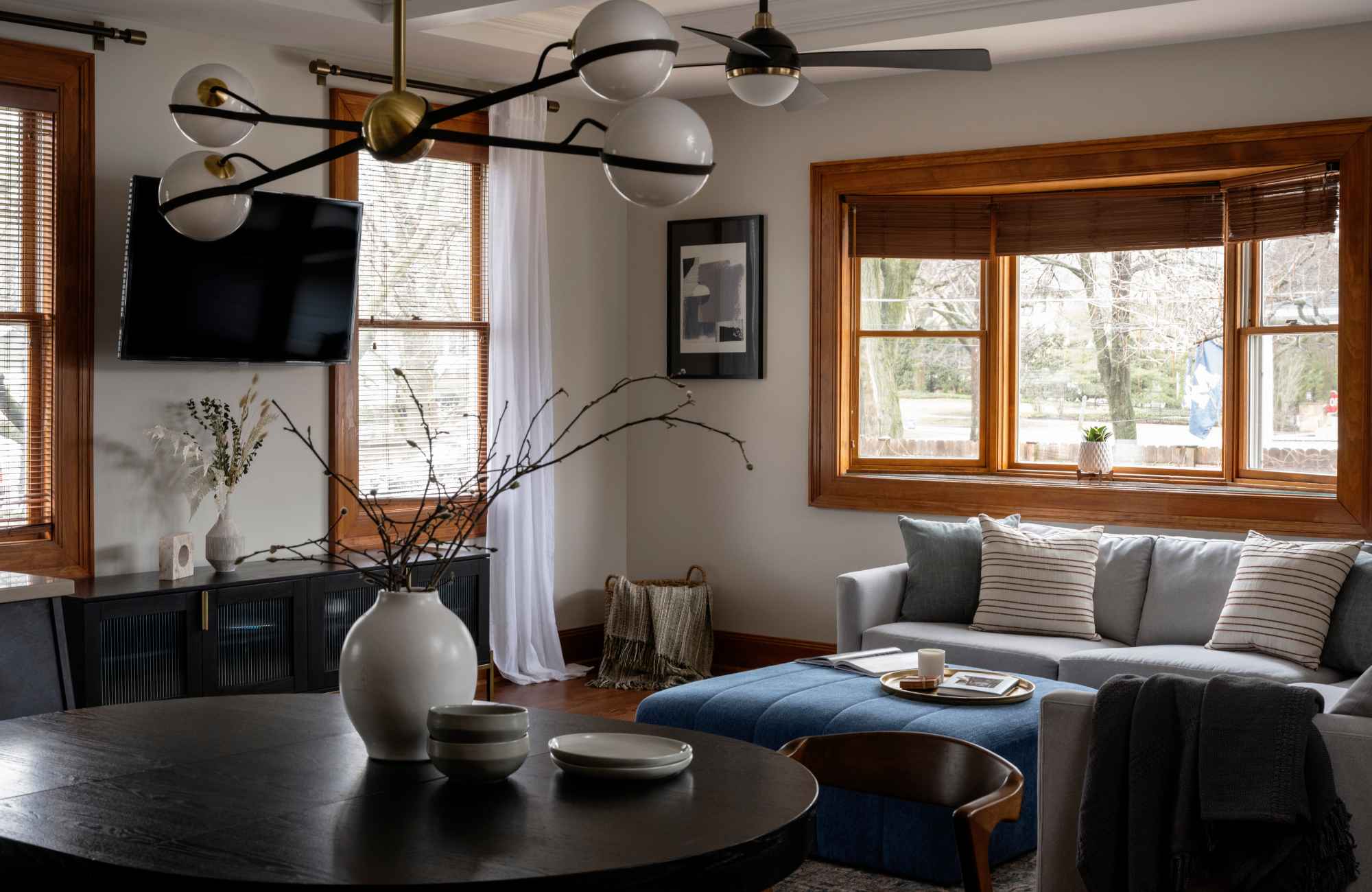I'm Kristen.
hello there!
Hey there and welcome! KP Home is a full-service interior design firm based in the glorious and character-filled city of Chicago. At KP Home, we believe that your home should be as unique as you are. We combine beautiful design with your experiences, personality, and taste to create a masterpiece.
browse our portfolio
view our
services
When you’re looking for a new home with your Chicago Realtor, it’s very easy to judge a property by its flaws. Elements like closed-off spaces, dark rooms, or a funky kitchen can be an immediate turn-off that have you walking for the exit.
But when you have the eyes of an interior designer, someone who can see the home’s true potential beyond its flaws, you may just find that the “ugly duckling” is actually the home you’ve been looking for all along.
This month, I’m teaming up with Meg Daday, owner of Heyday Homes, a division of Keller Williams, to reveal several of the most common design challenges and “no thanks” features that you’re likely to see in homes on the Chicago market. Meg will share her observations on the problems, and I’ll weigh in on the solutions. Let’s have some fun with it!
Problem 1: Dark & Closed-Off Spaces
Meg: Many Chicago homes and condos – especially the older, charm-filled ones our clients obsess over – tend to have cozier, more compartmentalized spaces instead of the airy, open layouts buyers dream of. The result? Rooms can feel a little too snug, a little too cluttered, and buyers struggle to picture the possibilities. But trust us – a little vision goes a long way.
Kristen: Historic charm doesn’t have to mean dim and disconnected. A few high-impact changes can bring light, flow, and a sense of calm to older layouts.
- Create cohesion with color: Opt for a soft, refined paint palette (warm whites, gentle taupes) that reflect light and visually unify separated spaces.
- Invest in elevated lighting: Replace dated overheads with sculptural fixtures, add sconces for warmth, and incorporate layered lighting to create ambiance from morning to night.
- Choose furnishings that support flow: Select low-profile, leggy, or curved furniture to maintain openness between rooms without sacrificing style or comfort.
- Open sightlines where it counts: Consider widening a doorway or adding an arched pass-through to connect spaces with architectural interest – no full gut required.
- Repeat finishes to connect rooms: Using the same flooring, hardware tones, or fabric textures in adjacent spaces helps smaller rooms feel like part of a larger whole.
- Use mirrors and reflective surfaces: Mirrors, glass, and lacquered accents bounce natural and artificial light, visually expanding even the tightest rooms.
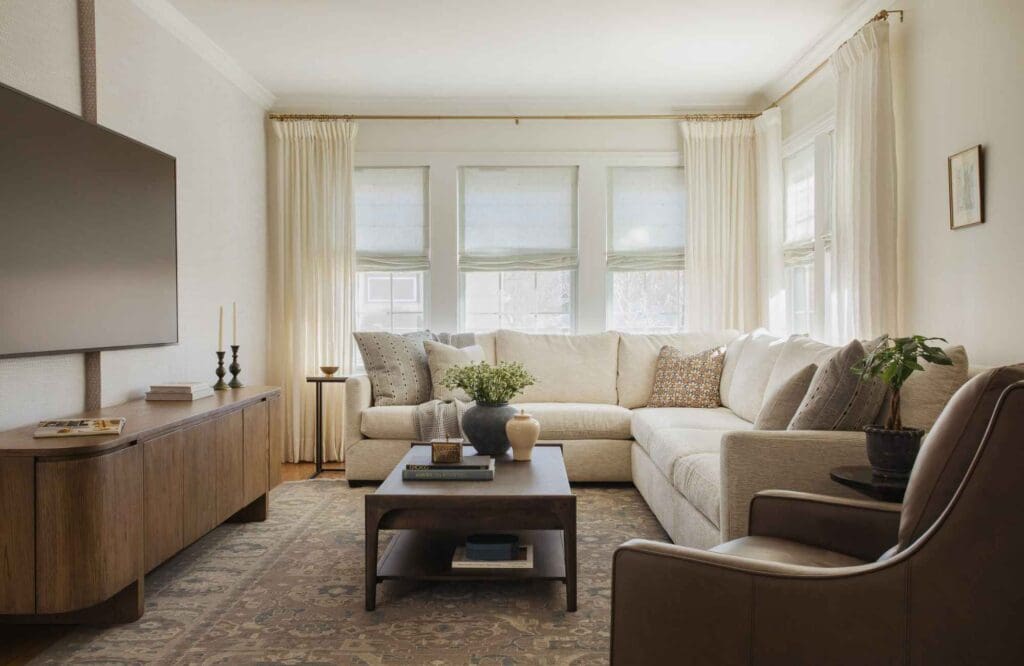
Problem 2: Weird Tile & Bold Paint Choices
Meg: Have you ever walked into a home to be immediately greeted by bright purple walls, retro ‘70s tile, or a carpet color that should’ve stayed in another decade? It’s an instant yikes moment – and for many buyers, it’s enough to send them running for the door. But here’s the thing: paint, tile, and surface-level design choices are some of the easiest, most affordable fixes you can make in a home.
Kristen: Thankfully, bold paint, dated tile, and carpet are cosmetic, not structural. Like Meg said, these are some of the least expensive elements to change but often have the biggest visual impact.
- Start with sophisticated neutrals: Repaint bold walls with elevated tones (muted sage, soft ivory, deep greige) to create a versatile canvas for future design.
- Balance quirky with chic: If you can’t renovate immediately, balance bold tile or surfaces with elegant lighting, sleek fixtures, and curated styling to shift the overall mood.
- Refinish or resurface thoughtfully: Paint cabinets or tile with high-quality refinishing products to create a clean slate while preserving the bones of the space.
- Use luxe textiles and furnishings: Layering in designer-grade rugs, drapery, and upholstery draws the eye away from dated finishes and toward what’s intentional.
- Phase updates for maximum impact: Focus on high-visibility areas like the backsplash or powder room first – these smaller zones offer a big design payoff with less disruption.
- Lean into contrast when appropriate: Vintage tile or loud finishes can actually become focal points when paired with restrained, modern decor. It’s all about balance.

Problem 3: Outdated Kitchens
Meg: Buyers often struggle to look past old cabinets, dated tile, or awkward layouts in kitchens in mid-2000s condos in Wicker Park, 1970s condo buildings in Gold Coast, or mid century ranches in Mount Prospect.
Kristen: It’s easy to see a space that feels outdated and assume it needs a full gut renovation, which can feel overwhelming and expensive. We love the idea of refreshing a 20-year old kitchen with fresh paint or resurrecting “Grandma’s house” with a little sweat equity.
- Paint with purpose: Repainting cabinets in a timeless tone (warm white, muted green, rich charcoal) instantly modernizes the space and sets a fresh foundation.
- Upgrade fixtures and hardware: Swapping in modern cabinet pulls, a beautiful faucet, and updated lighting transforms the overall impression without touching the layout.
- Replace select surfaces: Consider updating just the backsplash, countertops, or island to add visual contrast and luxury materials without overhauling everything.
- Incorporate designer styling: Bring in ceramic vessels, cookbooks, oversized art, and natural materials to create an intentional, elevated look – even if the cabinets are still original.
- Layer in high-design details: From a statement pendant to luxe bar stools, investing in furnishings and lighting now helps bridge the gap until a full renovation.
- Reimagine the layout over time: Work with a designer early to map out long-term kitchen plans. This allows for phased upgrades that make sense as the home evolves.
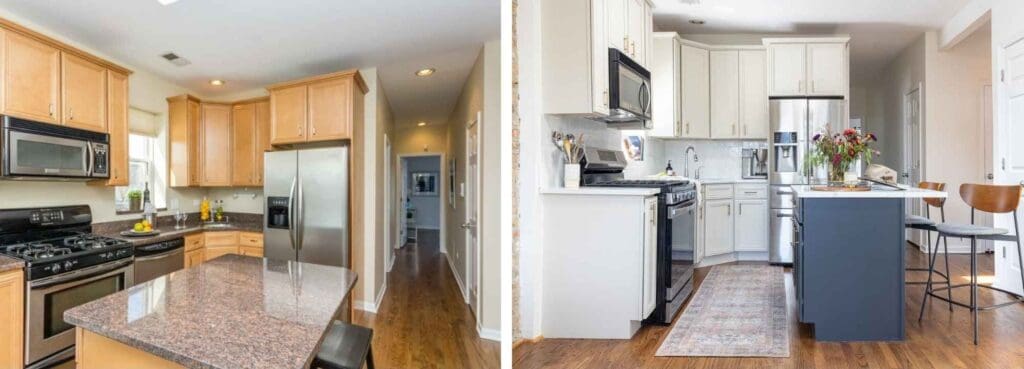
Problem 4: No Closet Space
Meg: Older homes weren’t built with today’s storage needs in mind, and that quickly becomes a reality when you’re tripping over LEGOs, running out of space for winter coats, or still trying to find a home for all those wedding gifts that never made it out of the boxes. Closet space (or lack thereof) can be a major deal breaker for buyers who are used to modern homes with walk-ins and custom shelving.
Kristen: It’s easy to assume a home won’t work for your lifestyle. But here’s the good news: a lack of storage doesn’t mean a lack of potential.
- Elevate with built-in cabinetry: Floor-to-ceiling wardrobes or custom built-ins (in bedrooms, entryways, or living areas) can offer serious storage while blending seamlessly into the architecture of the home.
- Use freestanding furniture beautifully: Don’t underestimate the power of a well-placed armoire, antique dresser, or bespoke storage console. These pieces offer character and practical space.
- Customize what you have: Maximize existing closets with fully outfitted systems (drawer inserts, double hanging rods, pull-out shelves) that turn even small closets into hardworking spaces. Closet systems on the market today are so much smarter and allow you to fully maximize your space.
- Create multifunctional moments: Benches with hidden storage, ottomans that hold blankets, or beds with built-in drawers offer everyday function while maintaining a high-design look.
- Style storage intentionally: Choose beautiful storage baskets, decorative boxes, or linen bins that look good on open shelving and can double as decor.
- Rethink unused spaces: Hallway nooks, under-window areas, or awkward alcoves can be reimagined as custom storage solutions – think reading benches with drawers or display shelving that hides clutter below.
- Look up/Leverage the back of doors: A lot of systems can go high so you can keep things tucked away for when you need them. Backs of doors can add hooks, storage, and more without getting into the layout.
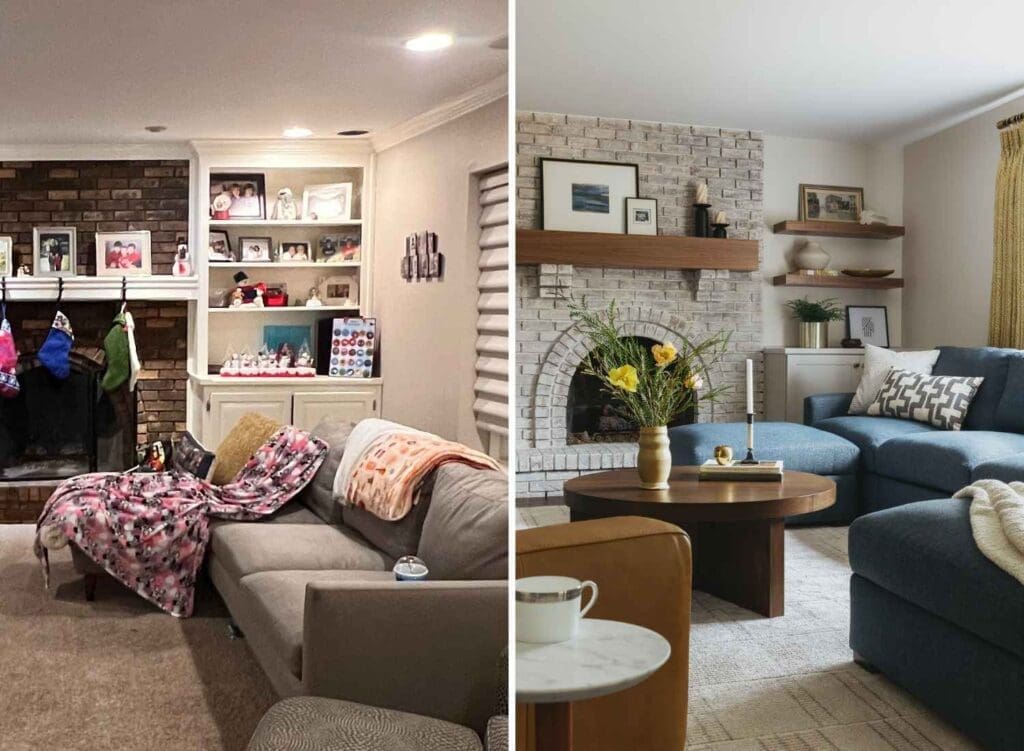
Problem 5: Natural Lighting Can Feel like a Limited Resource
Meg: Chicago homes – especially vintage condos, industrial lofts, greystones and classic brick two-flats – weren’t exactly built with natural light in mind. Tiny windows and dim, outdated fixtures can leave rooms feeling shadowy, cramped, and a little too moody for comfort, kind of like a Chicago winter afternoon (aka pitch black by 4 PM).
Kristen: The good news? Lighting has come a long way, and this is one of the easiest fixes in a home.
- Start with a lighting plan: Think in layers: ambient (ceiling lights), task (lamps, under-cabinet), and accent (sconces, art lighting). Each plays a role in making a space feel well-lit and intentional.
- Swap outdated fixtures for statement pieces: Replace old or builder-grade lighting with eye-catching pendants, sculptural chandeliers, or artisan sconces that serve both function and style.
- Bring in decorative table and floor lamps: Not every room needs an overhead fixture. Layering in warm, dimmable lamps instantly adds depth, coziness, and flexibility.
- Use reflective materials strategically: Incorporate mirrors, lacquered finishes, glass, metallics, and high-sheen accents to bounce light and visually expand the space.
- Go lighter with paint and textiles: Choose light-colored walls, rugs, and upholstery to reflect available light. Bonus points for layered neutrals, which feel high-end and warm.
- Install window treatments that let light in: Ditch heavy drapes for custom linen panels or woven shades that provide privacy without blocking precious sunlight.
- Use art lighting to elevate and brighten: Picture lights over framed art or even battery-powered, plug-in sconces can bring gallery-like warmth to shadowy corners.
- Create mood with dimmers and smart bulbs: Upgrade your switches and bulbs for complete control over brightness and tone, from bright daylight to cozy evening vibes.
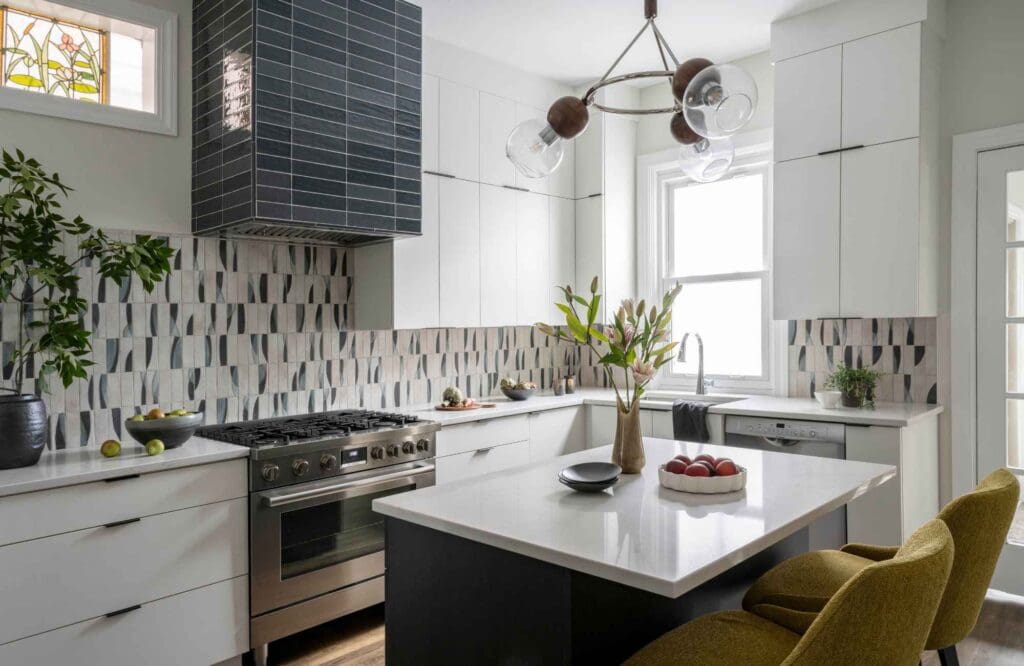
Is the Work Worthwhile?
Kristen: We all know the positive impact that updating your home’s design has on your lifestyle, but we have to ask you about the other side of the coin, Meg. Do these design improvements make a significant difference in its market value?
Meg: Yes, and I have a great example to share. Last year, we helped a client sell for $65,000 more than a nearly identical unit in the same building, just a few months apart. Both were listed at $495,000, yet our client sold her unit for $575,000 in March, while the other unit sold for $510,000 in August. You heard me right – same building, same floor plan, but very different results!
Kristen: Wow, that’s incredible! What would you say made the difference?
Meg: My client had made smart, strategic updates to create a modern feel, while retaining all of the vintage charm. Her kitchen refresh included new cabinets, appliances and fixtures to make the space feel modern and inviting. In the bathroom, she replaced the vanity, light fixtures and tile to create a spa-like feel that buyers loved. Refreshed lighting and paint made the spaces feel bright, airy and move-in ready. Finally, we staged the home professionally, ensuring every photo showcased the home’s best features. The result? Buyers saw value, not work. And the offers reflected it.
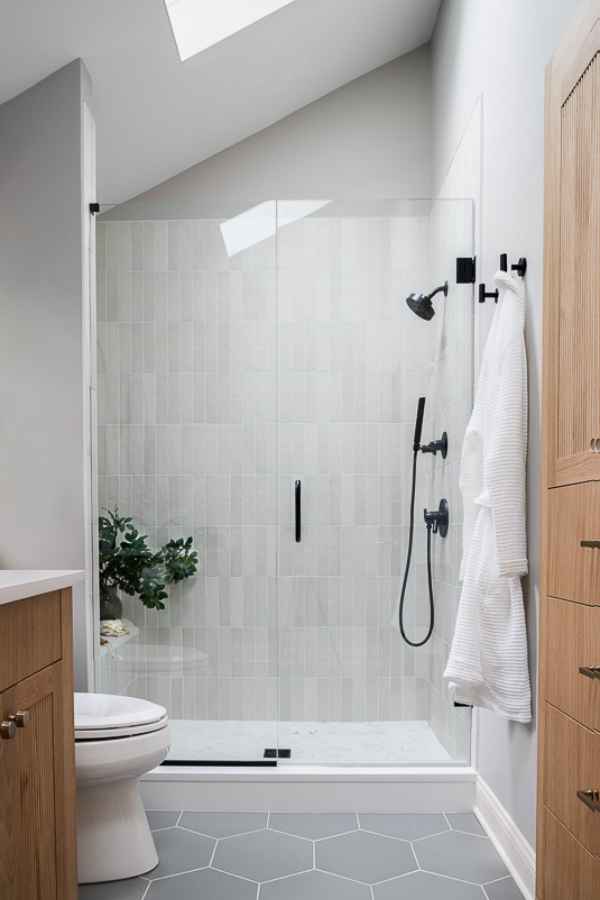
Takeaways: What to Consider When Buying a Home
- Common Chicago homebuyer turn-offs—dark spaces, outdated finishes, awkward layouts—are often easy to fix.
- Strategic design updates like paint, lighting, and smart storage can completely transform a home.
- Even “ugly duckling” homes can become dream properties with the right vision and interior design solutions.
- Thoughtful improvements not only enhance daily living but can significantly boost resale value.
- Partnering with an experienced Realtor and designer helps you see potential others might miss.
Uncovering Your Home’s Potential
Pretty compelling, isn’t it? It can be so easy to dismiss a home after a quick glance, but when you look deeper and evaluate its potential, you may find that it can become the perfect home for you. Many thanks to Meg for her time, expertise and perspective – if you’ll be in the market to buy or sell, she’s an incredible professional to partner with.
And when you find that home bursting with potential and feel ready to take on some updates to make it your own, we’d love to work with you. Reach out to us here, and let’s connect.
Warmly,
Kristen
ABOUT THE AUTHOR
Kristen Pipal is the founder and principal designer of KP Home. She creates timeless, personality-driven spaces throughout Chicago and beyond. Kristen is especially passionate about helping busy families and professionals enjoy homes that support their lifestyle.
